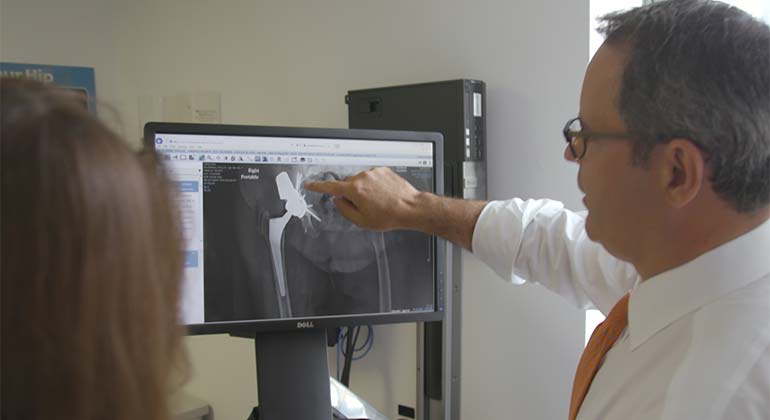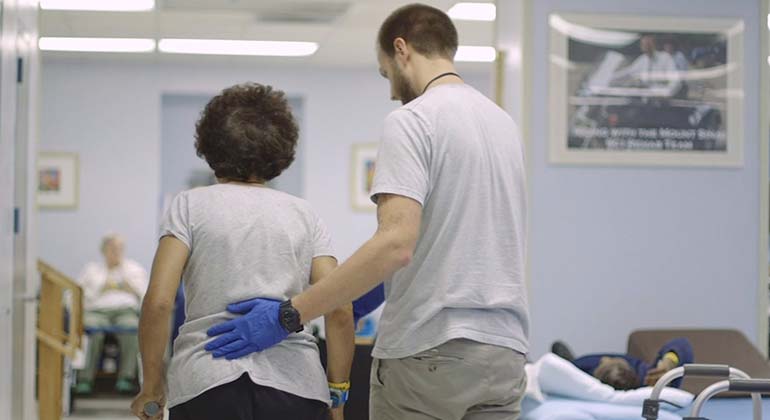Treatment Options


Our main goal is to ease your pain and restore your mobility. At Mount Sinai, you will receive a personalized consultation and your care team will help you develop your own plan of care. We will guide you in determining if you need joint replacement surgery.
Non-surgical options can include:
- Physical therapy
- Taking anti-inflammatory medications
- Weight loss
Types of Joint Replacement Surgery
We perform a variety of joint replacement surgeries at Mount Sinai. Your treatment will include the latest technologies to achieve the best possible outcome for you. The most common surgeries we perform are:
- Total Knee Replacement/Arthroplasty is the most common joint replacement surgery. It involves replacing damaged bone and cartilage with implants, to restore your ability to move your joint.
- Partial Knee Replacement (Unicondylar) involves the replacement of only the damaged bone and cartilage in the knee, leaving healthy tissue untouched.
- Partial Hip Replacement (Hemiarthroplasty) involves the replacement of one side of the hip joint. This surgery is most commonly used for patients with hip fractures.
Surgical Options
Hip and knee replacements are the most common types of joint replacement. You might need a joint replacement due to a trauma fracture or a disease such as arthritis. During joint replacement, our surgeons remove diseased or injured bone and cartilage and replace them with artificial joints called prostheses. These artificial joints are designed to move like a normal healthy joint. We perform many advanced joint replacement surgical procedures including the following:
- Arthroscopic surgery involves making small “keyhole” incisions and using a small camera and refined, thin instruments to clean up the joint.
- Osteotomy is a corrective procedure to restore joint alignment and preserve cartilage.
- Total joint replacement involves removing the damaged knee or hip and replacing it with a prosthesis.
- Partial joint replacement is when we remove only the damaged part of the hip or knee and replace it with a man-made prosthesis.
- Patellofemoral replacement involves resurfacing the kneecap, known as the patella, and the end of the thighbone, known as the femur.
- Arthroscopy is a minimally invasive procedure where we thread a camera through a small incision into your knee joint. We use the camera to guide other instruments to the problem area so that we can repair damage ranging from arthritis deterioration to meniscus tears.
- Osteotomy involves removing or adding a small section of bone to either the upper shinbone or lower thighbone to help decrease pressure on the damaged section of the knee joint. This approach is particularly effective for you if you are too young for a total joint replacement.
- Total joint replacement (also known as arthroplasty) involves reconstructing a damaged knee or hip and replacing it with a prosthesis.
- Partial (unicondylar) knee replacement is when we remove only the damaged bone and cartilage in the knee and replace it with an artificial prosthesis, leaving the healthy tissue untouched.
- Patellofemoral replacement is particularly effective when you have severe arthritis of just the kneecap and no arthritis in the rest of the knee. We insert a patella (kneecap) replacement without disturbing the rest of the knee joint.
- Minimally Invasive Techniques
- Robotic Surgery